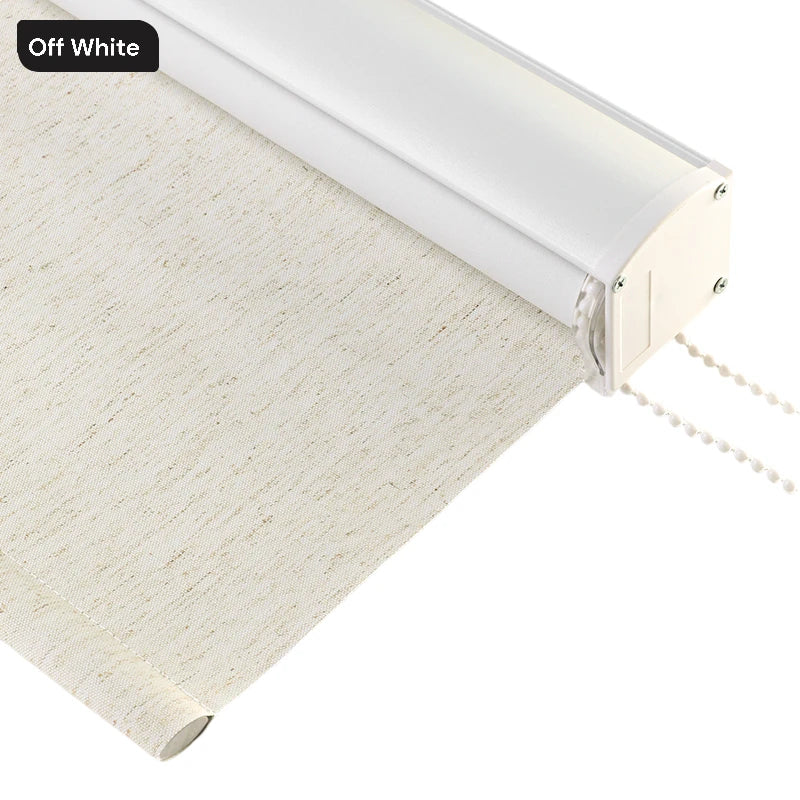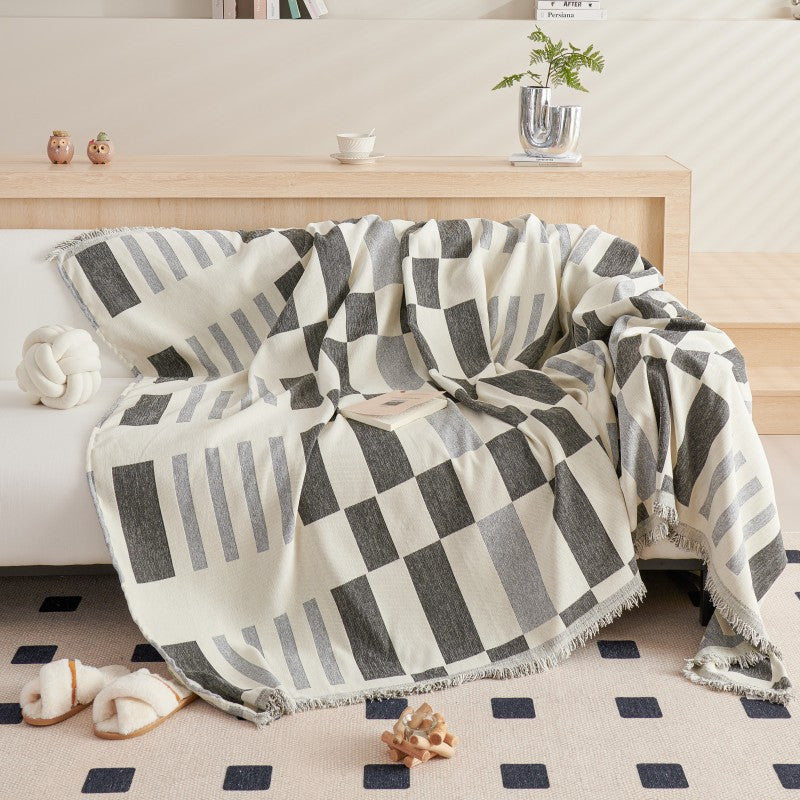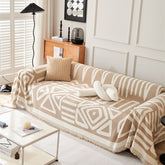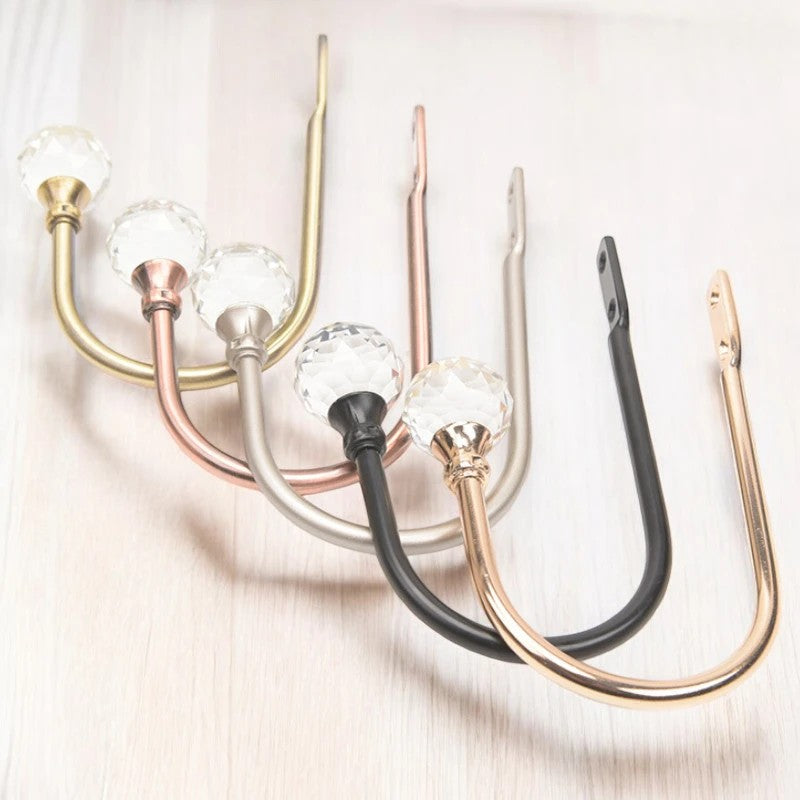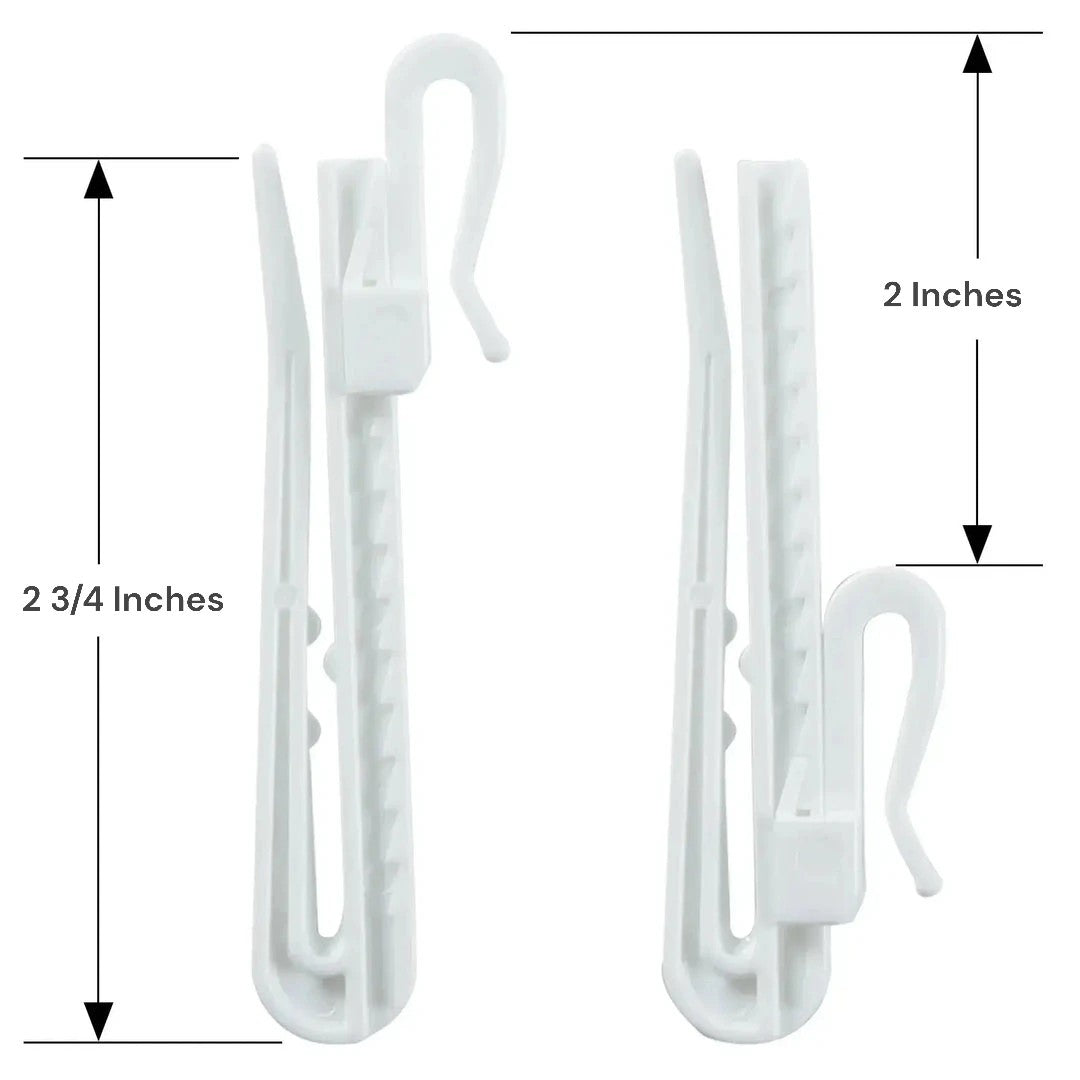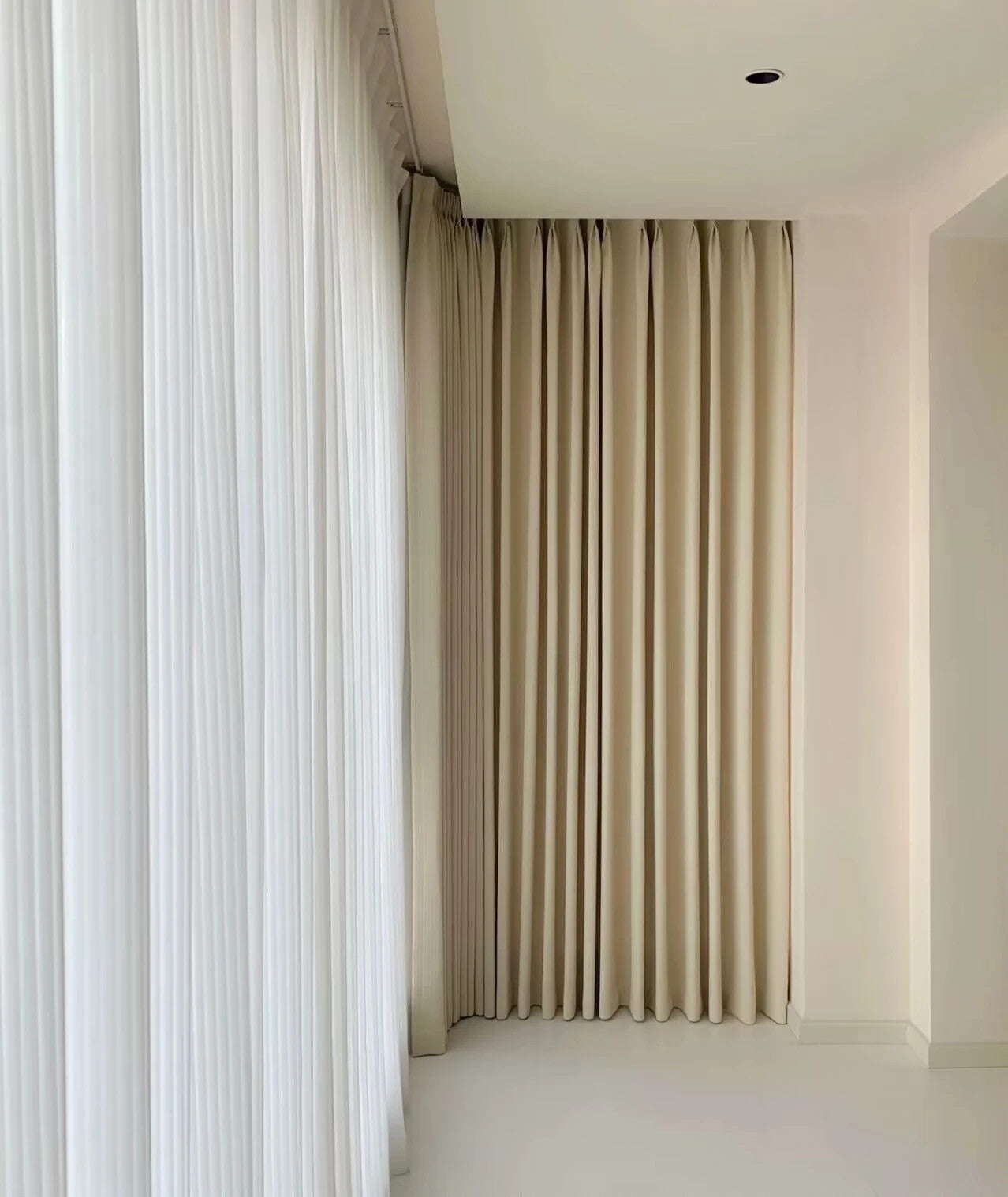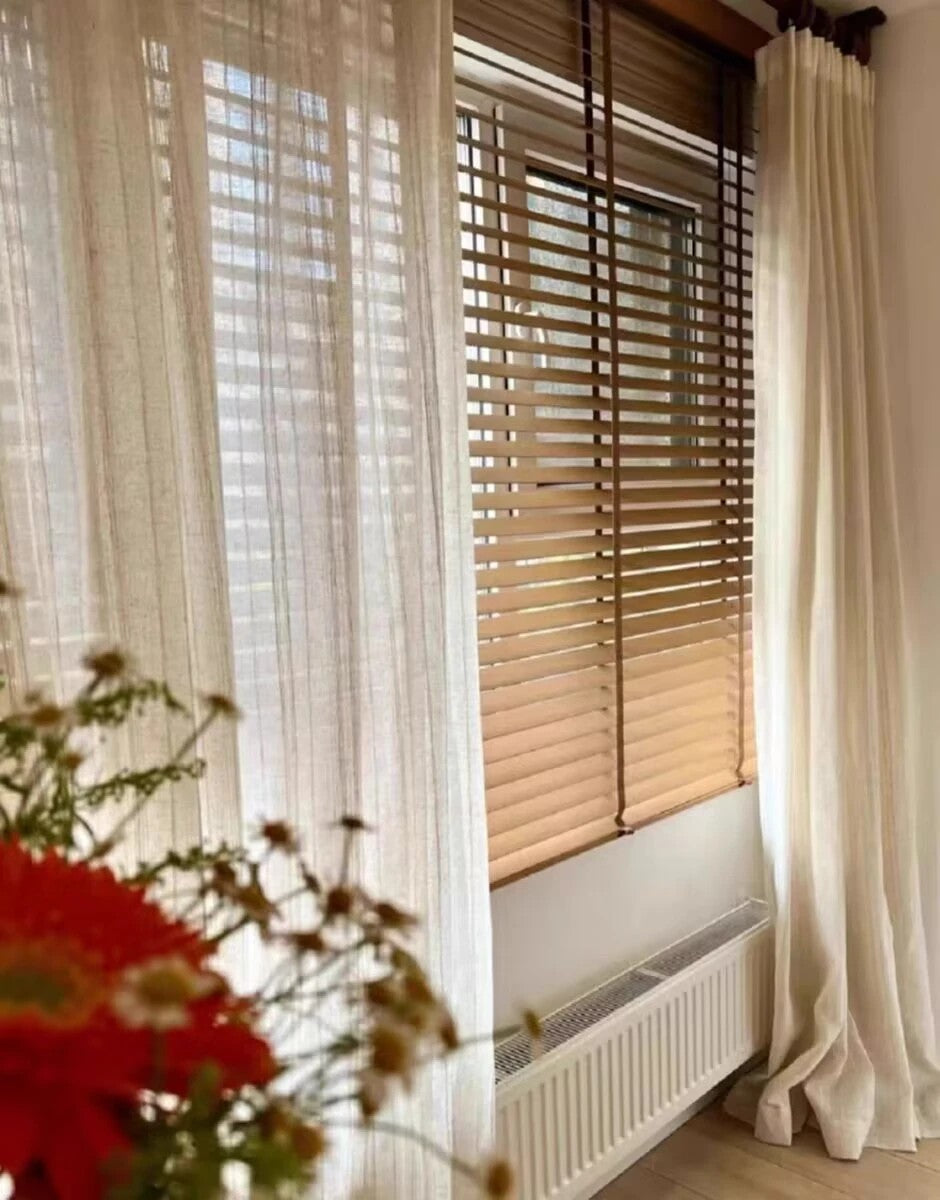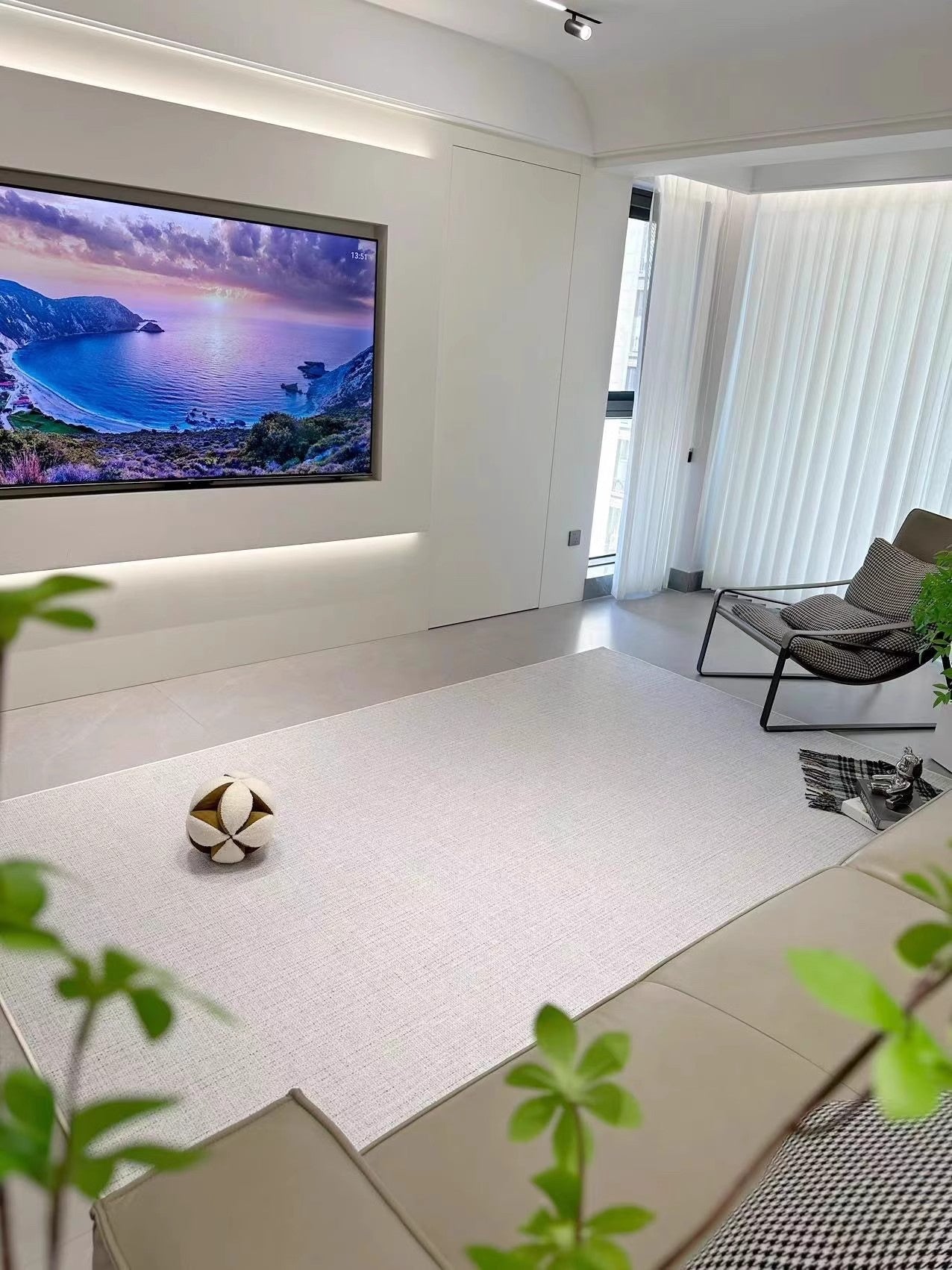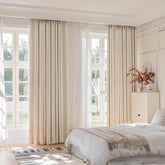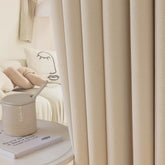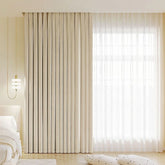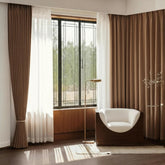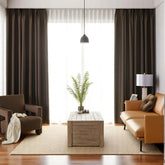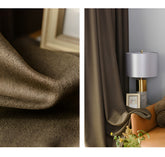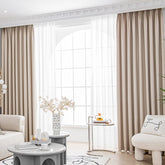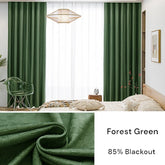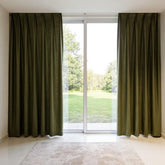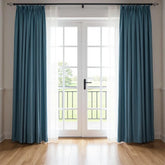Should Blackout Curtains Touch the Floor? The Ultimate Guide
Last Update: March, 2025
Hi there! I'm James, the owner of Dolcewe.com. For over 10 years, I've helped thousands of customers find the right curtains for their homes.
One question I get all the time is about blackout curtain length. Should they touch the floor? Let's find out!
Key Takeaways
| Main Section | Key Takeaway |
|---|---|
| Why Curtain Length Matters | The right curtain length affects both room appearance and light-blocking ability. Choose floor-length for maximum darkness and visual impact, or shorter styles for practicality in busy areas. |
| Benefits of Floor-Length Blackout Curtains | Floor-touching blackout curtains provide superior light blocking and help keep rooms warmer. Install them in bedrooms for better sleep quality and living rooms for a more elegant appearance. |
| When Shorter Curtains Work Better | Install shorter curtains in kitchens, bathrooms, and areas with radiators or high foot traffic. They collect less dust, stay cleaner longer, and are safer around pets and small children. |
| Room-by-Room Curtain Length Guide | Use floor-length blackout curtains in bedrooms and living rooms for maximum darkness and style impact. Choose shorter curtains in kitchens and bathrooms to prevent moisture damage and food stains. |
| How to Measure for Perfect Curtain Length | Measure from your curtain rod to your desired endpoint, adding 2-3 inches if using rings or clips. For floor-touching styles, measure to 1/2 inch above the floor to prevent dirt buildup. |
| Three Main Curtain Length Styles | Pick hovering style (1 inch above floor) for modern rooms, floor-touching for versatile elegance, or puddle style for formal spaces. Match your choice to how much you clean and how the room is used. |
| Practical Tips for Hanging Your Curtains | Mount curtain rods 4-6 inches above windows and extend rods 3-6 inches beyond the window frame to make windows appear larger. Use curtain weights in the bottom hem for a straighter, more polished look. |
| Caring for Curtains Based on Length | Vacuum floor-length curtains weekly at the bottom edge with your brush attachment. For easier care, choose washable fabrics for busy rooms and use fabric guard spray to repel dust and stains. |
Why Curtain Length Matters

The right curtain length can make your room look better. Long curtains make rooms feel taller. Short curtains can look neat and clean. Your choice affects how much light gets blocked too.
When you pick blackout curtains, length is super important. These curtains block light better than sheer ones. They also help with room warmth and noise control.
Blackout curtains work best when they fit your space just right. I'll help you decide if your curtains should touch the floor or not.
Benefits of Floor-Length Blackout Curtains

Floor-length curtains have some big plus points. Let me share why many of my customers love them.
Better Light Blocking
Better light blocking happens when curtains touch the floor. This means fewer light gaps at the bottom. Your room stays darker for better sleep.
Aesthetics
The look is more fancy and complete when curtains reach the floor. They create a flow from ceiling to floor. This makes your windows seem larger.
Insulation
Floor-length curtains also help with room warmth. They stop cold air from coming in at floor level. This can save you money on heating bills.
Here's a helpful comparison of different curtain lengths:
| Curtain Length | Light Blocking | Style Impact | Best For |
|---|---|---|---|
| Floor-touching | Excellent | Elegant, formal | Bedrooms, living rooms |
| Above floor (1 inch) | Very good | Modern, clean | High-traffic areas |
| Puddle style | Excellent | Luxurious, dramatic | Formal rooms, low-traffic areas |
| Below windowsill | Fair | Casual, practical | Kitchens, bathrooms |
When Shorter Curtains Work Better

Not all rooms need floor-length curtains. Sometimes shorter ones make more sense.
Easier cleaning is a big plus for shorter curtains. They don't collect dust from the floor. This helps if you have allergies.
Shorter curtains work great in wet rooms like bathrooms and kitchens. They won't get damp from floor moisture. This stops mold from growing.
If you have pets or small kids, shorter curtains might be safer. Nobody will trip on them. Your curtains will last longer too.
Radiators under windows need shorter curtains. Long curtains would block heat. This causes energy waste.
Room-by-Room Curtain Length Guide

Different rooms have different needs. Here's what works best in each space.
Bedrooms need the most light blocking. Floor-length blackout curtains work best here. They help you sleep better by keeping the room dark.
For living rooms, the look matters most. Floor-length curtains create a fancy feel. They make the space seem bigger too.
Kitchens do better with shorter curtains. Food splashes and water can stain long curtains. Curtains that end at the windowsill stay cleaner.
In bathrooms, shorter is also better. Moisture can make long curtains moldy. Pick ones that end at or just below the windowsill.
How to Measure for Perfect Curtain Length
Getting the right length means measuring right. Check our curtain size calculator.
Here's how to do it:
- Get a tape measure and step stool
- Measure from your curtain rod to where you want curtains to end
- Add 2-3 inches if you'll use rings or clips
- Write down the number so you don't forget
For floor-touching curtains: Measure to 1/2 inch above the floor. This lets them hang nicely without getting dirty.
For puddle-style: Add 2-8 inches to your floor measurement. More fabric creates a bigger puddle effect.
For above-floor style: Measure to 1 inch above the floor. This creates a clean, floating look.
Three Main Curtain Length Styles

There are three main ways to hang your blackout curtains. Each creates a different look in your room.
Hovering style means curtains hang about 1 inch above the floor. This looks modern and clean. It works well in busy areas with lots of foot traffic.
Floor-touching style has curtains just barely touch the floor. This is the most common and versatile look. It works in almost any room.
Puddle style means extra fabric rests on the floor. This looks very fancy and old-world. It works best in formal rooms that don't get much traffic.
Practical Tips for Hanging Your Curtains

Hanging curtains at the right height makes a big difference. Here are my best tips:
Mount your curtain rod higher than your window frame. This makes windows seem taller. A good rule is 4-6 inches above the window.
Extend rods 4 - 5 inches past the window on both sides. This lets in more light when curtains are open. It also makes windows look wider.
Use curtain weights for floor-length styles. Small weights in the bottom hem help curtains hang straight. This looks more neat and finished.
Check length before hemming. Wash new curtains first if they're washable. Some fabrics shrink after washing.
Caring for Curtains Based on Length
Different curtain lengths need different care. Here's how to keep yours looking great.
Floor-length curtains need regular vacuuming at the bottom. Use your vacuum's brush attachment once a week. This removes dust before it builds up.
Shorter curtains are easier to take down and wash. Most can go in your washing machine. Check the care label to be sure.
For puddle-style curtains, plan on more frequent cleaning. The extra fabric on the floor collects more dust. Professional cleaning works best for these.
All blackout curtains last longer when you open and close them gently. Rough handling can damage the blackout lining.
Curtain Styles Guidelines for Other Areas of Your Home
When it comes to curtains, they can add privacy and style to more than just windows. In fact, there are various areas in your home where curtains can be a fantastic addition.
Let's explore some of these areas and the curtain guidelines for each.
1. Shower Curtains
Shower curtains are an essential element in bathrooms, providing privacy while also adding a decorative touch. When choosing shower curtains, it's important to consider their length and material.
Opt for curtains that are specifically designed for bathrooms and can withstand moisture. This will ensure that they last longer and don't get moldy or damaged easily.
2. Café Curtains
In kitchen and bathroom spaces, café curtains have gained popularity for their charming and functional appeal. These curtains cover only the lower portion of the window, allowing natural light to enter while maintaining privacy.
When selecting café curtains, consider the style of your space and choose materials that are easy to clean and resistant to moisture.
3. Curtain Length and Material
When it comes to curtain length for these areas, it's essential to measure the specific space to ensure a proper fit. For shower curtains, they should typically reach the floor or fall just below the edge of the bathtub. Café curtains, on the other hand, should be tailored to the height of the window sill.
| Area | Recommended Curtain Length | Ideal Curtain Material |
|---|---|---|
| Shower | Floor length or just below bathtub edge | Water-resistant and mold-resistant fabric |
| Kitchen and Bathroom | Tailored to the height of the window sill | Easy to clean and moisture-resistant material |
By following these curtain guidelines for other areas of your home, you can enhance both the functionality and aesthetics of each space. From shower curtains to café curtains, there are options available to suit your style and meet the specific requirements of each area.
Conclusion
So should your blackout curtains touch the floor? While floor-length blackout curtains make quite the dramatic style statement, the practical considerations around cleaning and safety risks shouldn't be ignored. Shorter alternatives can also effectively blackout light. Consider all the pros and cons before deciding what works best for your space.
At Dolcewe, we offer a variety of blackout curtains in lengths perfect for different situations. The best part? We offer custom-sized curtains starting $26.99!
Check out our collection today to pick options suiting your individual room décor needs and sleep quality goals!
Frequently Asked Questions
What types of curtains are available?
Type of curtain vary widely, from sheer and lightweight to heavy and insulating. You can choose from grommet-top, tab-top, rod-pocket, and other styles to suit your decor and functional needs.
How do you hang your curtains?
When you hang your curtain, ensure the rod is properly installed and positioned to allow the curtains to move freely. Consider the new curtains length and the room feel you want to achieve when determining the rod placement within the window frame.
What is the ideal length for curtains?
Don't touch the floor but should be longer than the window and can vary based on personal preference and design style.
For a standard look, choose floor length curtains or curtains that touch the floor without allowing them to drag or bunch overly long above the floor.
How should curtains be hung above the floor?
For curtains to be properly hung, they should typically be around 1 inch above the floor, creating a clean and polished look while still maintaining the common curtain length.
What should the top of the curtain be like?
The top of the curtain can be styled in various ways, such as tab-tops, back-tabs, grommets, and pleats, each influencing the curtain drop and overall look.
Choose a style of curtain that complements your room decor and desired aesthetic.
Should curtains touch the floor?
It's all about personal preferences. Curtains are typically designed to touch the floor or hover just above it to create an illusion of added height. This makes the room look more spacious and elegant.
How do you make ready-made curtains work for your space?
Pick ready-made curtains that come close to the ideal length of the curtain. If they're not perfect, don't fret. You can easily adjust the curtain rod height or give a quick hem to the curtains, making them a perfect fit for your room



